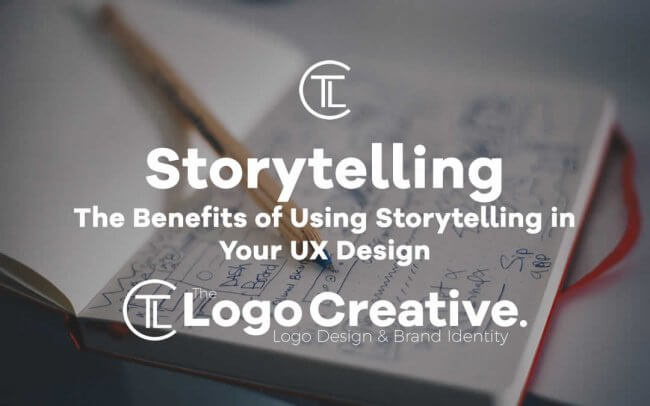From cave paintings to eBooks, storytelling has been part of the human experience for eons. It’s been so prevalent in our history that, at this point, storytelling is practically in our DNA. Whether we’re recounting our day or giving instructions, stories are there to move our ideas along; it’s how we communicate and convey thoughts, feelings, and emotions.
As such, storytelling has no borders; everyone, regardless of race, colour or creed, engages in it. In fact, while writing about the use of stories in UX Design, Dan Gruen, Cognitive Scientist at IBM Research AI Group, expanded on this idea by saying that “[a] story is a design communication tool that transcends the cultural divides.” As it happens to be, anything can be turned into a story, even a UX design. That is to say that if good UX solves a problem, storytelling is the backbone that makes it possible. UX storytelling, then, is a way of communicating something in a way that makes your audience more receptive to it, and here are its benefits.
Table of Contents
It Leads to Higher Engagement and Remembrance
Stories are captivating. They capture attention and keep a tight hold on it until the very end. As a matter of fact, using storytelling in content marketing can actually increase the number of people who reach the bottom of a blog post by 300%. This can be explained by the simple fact that stories, framed with a specific structure that has a beginning, middle and end, turns a passive reader, listener or observer into an active one.
The thing is, presenting information as is will put users off. It’s dry, sometimes boring, and often leads to gaps in understanding because trains of thought can run amok when we’re not engaged. The alternative, combining facts and figures in a narrative, taps into our affinity for stories and opens an avenue for learning that’s rich and ensures we’ll remember more of what we’re presented.
Engaging in UX storytelling while using literary devices like metaphors and analogies also creates memorable UX that is not only easier to understand, but also to remember. Think of a map or a guide. When presenting an idea or design in story format, whether it’s an article, a website or product, each device acts as a reference point for the future that facilitates remembrance.
It Breaks Down Complex Ideas and Makes Them Easier to Comprehend
Apart from the story format, the higher engagement and remembrance that characterise storytelling in UX design is made possible by a story’s ability to break down complex ideas and make them easier to comprehend. As we covered above, presenting information in a narrative gives it flow — it makes an idea easier to present because it can be broken down into separate parts.
For example, as you can see in this article that covers seven examples of the storytelling potential of great UX design, Highline presents a long-form article that accentuates its grim message that “Millennials Are Screwed” with a UX design that moves along a narrative studded with compelling 16-bit graphics that bring nostalgia to any 20- or 30-something year-old. Apart from the reminiscent factor that inherently piques our curiosity and attention, the graphics paint the article’s many points in a visual manner that makes them easier to grasp. Using another example, it’s the difference between saying that approximately 1.3 million Earths can fit inside the Sun and actually showing it:

Comparison showing the Sun (top) and approximately 1,300,000 Earths (bottom)
In other words, a story’s structure acts as a guide that maneuvers users through a journey — the beginning sets the scene, introducing the characters and conflict to capture attention; the middle gets into the details, building intrigue as it moves the plot along; and the end is the conclusion and big reveal that ties everything together. This structure works because it encompasses the five main elements of a story that work together to keep it running smoothly so that users can follow the action in a logical and cohesive way:
- The theme is the central idea
- The setting is the situation around story
- The characters are key players in the story (in our case, the characters are your users)
- The conflict is the struggle that the characters have to overcome
- The plot includes the events surrounding the conflict that lead to a resolution
It Creates Positive Brand Experiences and Smooths the Customer Journey
“A compelling story can shape how other people see you. Their perception of you will determine whether they’ll read your great content, comment on your blog posts, refer others to your blog or your social media channels, hire you or buy from you.” – Neil Patel
Any creative design agency that specialises in UX will tell you that stories inspire — they make us feel. And when what we feel is positive, associations begin to form between us and the person or brand delivering that story. It’s like the quote from Neil Patel above; all you need to change your user’s perception of you is a well-delivered story.
Delving deeper, using storytelling in your UX design will smooth the customer journey because a good story will form positive associations between you and your audience and will leave them wanting more, and each time you give them another story, that association is strengthened. And as that association gets stronger and stronger, they’ll trust and like you more, making it more likely that they’ll eventually convert.
Final Thoughts
It makes sense that whenever presenting a UX design, its impact will increase by using storytelling. After all, storytelling is part of our collective culture and we encounter it every day. For one, it leads to higher engagement and remembrance by virtue of capturing attention and holding it. Second, the structure that comes with a story works to break down complex ideas, making them easier to digest. Third and finally, when done right, storytelling can create positive brand experiences and associations between you and your audience, making it that more likely that they’ll convert.
Author Bio:
Sabrina Sedicot is a content writer for Appnova, a creative design agency in London that specialises in fashion and luxury brands. She writes on a variety of subjects that range from web design and user experience (UX) to search engine optimization (SEO).


